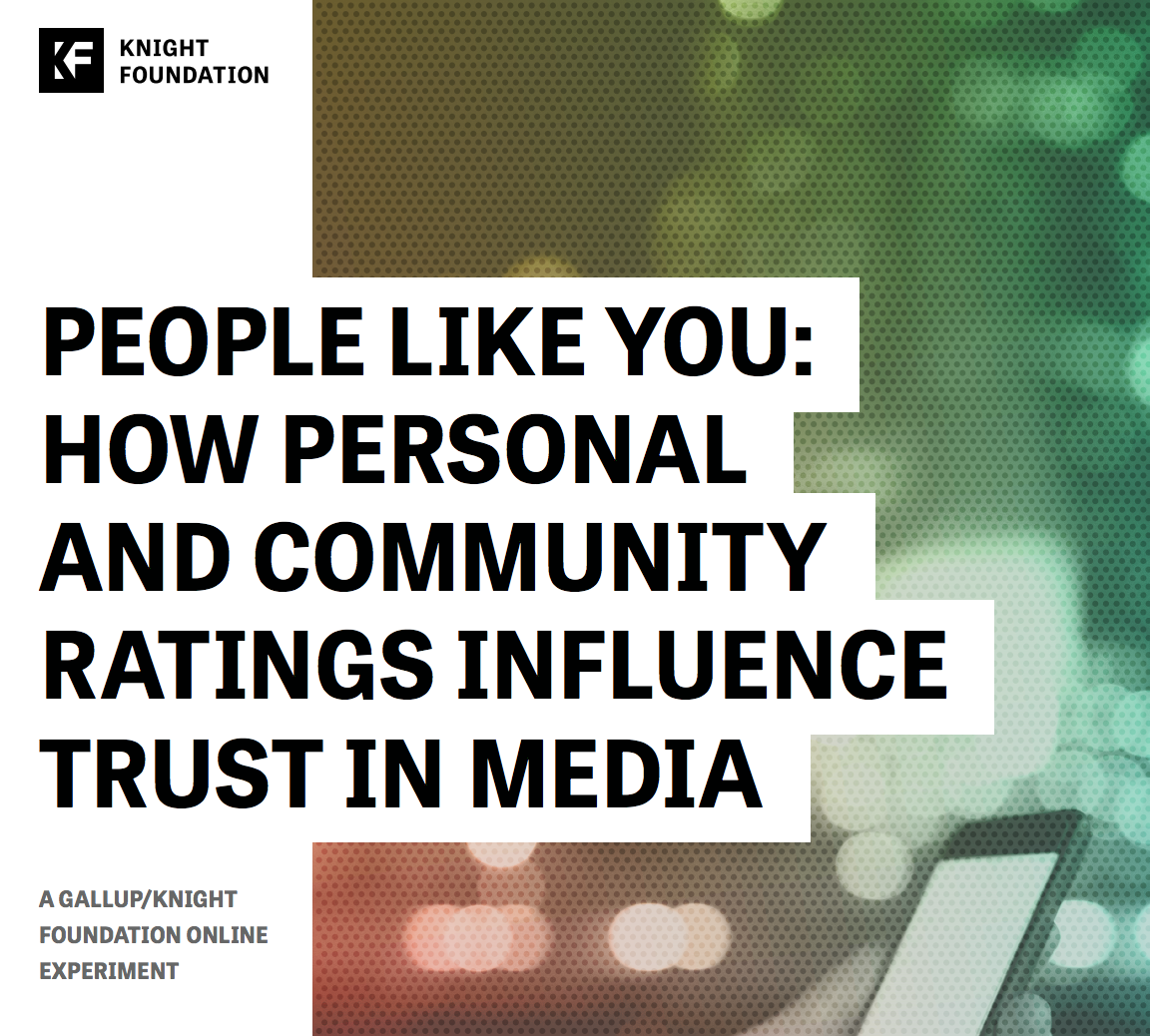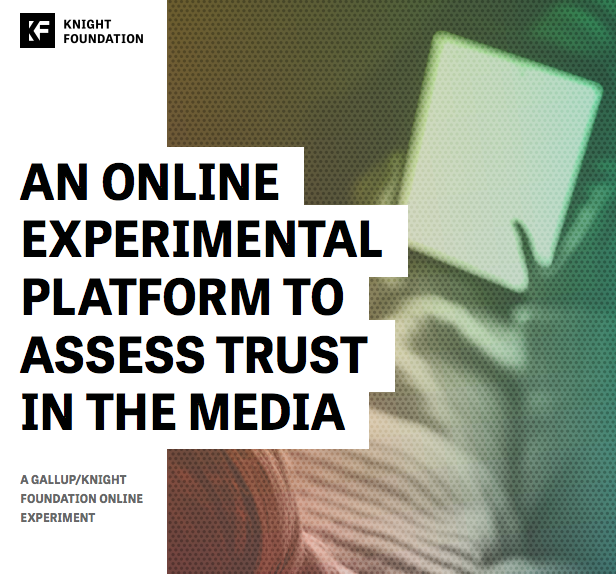The spread of misinformation or strongly biased news has been enabled, at least partially, by digitally based techniques that strategically target news content at consumers. The methods provide news consumers with stories based on the story’s popularity in the general public or with a certain group of people, or because of the consumer’s past online behavior. The use of opinion- or behavior-based metrics such as trust ratings, as well as the use of algorithms, may not only direct some Americans to less-than-credible stories but also could lend these stories unwarranted credibility.
How this reality interacts with another long-standing media trend — the decline in Americans’ confidence in the media — is not entirely clear. This report hopes to contribute to this overarching issue by reviewing the results of an experimental study that measured how the use of opinion- or behavior-based metrics influenced study participants’ levels of trust in the media.
In the experiment, study participants used a custom-built news aggregation platform to view up-to-date news stories from seven prominent news outlets across the ideological spectrum. Then they rated their level of trust in the article using a 5-point Likert scale.
When viewing a news story, some participants were able to see the average historical trust rating assigned by themselves or other participants in the study. Those in the control group rated their trust in each article, but they did not see any other groups’ historical average ratings.
The findings of this experiment suggest that showing news consumers the trust ratings of others has a negative effect on news consumers’ trust levels.
Gallup and Knight Foundation acknowledge support for this research from the FordFoundation, the Bill & Melinda Gates Foundation, and the Open Society Foundations.
-
Information and Society / Report

